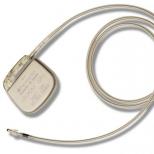ECG: interpretation, the main elements of the cardiogram in normal and pathological conditions
Deciphering the ECG of the heart is a complex process that requires experience, knowledge and care. In detail, the technique of execution and analysis is studied by a cardiologist who can detect and justify almost any pathology of the heart. However, knowing the basic scheme, a person without a medical education can detect disturbances in the rhythm or conduction of the heart muscle. What a normal ecg looks like will be discussed in detail below.
Deciphering the ECG and the norm are inseparable from each other, since it is impossible to determine the pathology and the correct execution technique without knowing the normal indicators. Impulses are recorded in 12 leads: three standard leads (I, II, III), three reinforced leads (avF, avL, avR) and six chest leads (V1 - V6). Waves: Q, R, S, P, and T. Intervals: PQ, QRST, RR. Complex - QRS.
Analysis of the ECG for various disorders involves the search for differences from the normal values of the above elements in various leads. Deciphering the ECG lead is not separately carried out in clinical practice, since this method is not informative.
The norm of ecg analysis implies compliance with 2 stages. The first is to check the registration technique, which allows you to identify equipment problems or incorrect ECG recording. The second - actually analysis ekg.

Checking registration technique
Deciphering the results of the ECG should begin with a check of the registration technique. This is the easiest step, which involves:
- measuring the amplitude of the calibration signal - this is the first image on the electrocardiogram, in the absence of a breakdown in the equipment, it is 10 mm;
- no interference;
- assessment of the speed of paper movement - as a rule, it is indicated along the edges of the cardiogram sheet.
It can be independently determined by the width of the QRS complex: if it is less than 6 mm in the photo of the ECG of the heart, then the registration speed is 50 mm / s, if more - 25 mm / s. This is necessary to determine the duration of 1 mm on paper with a cardiogram: 50 mm / s - 0.02 s, 25 mm / s - 0.04 s.
The appointment of an ECG may be accompanied by other methods of functional diagnostics. Details. To make a correct diagnosis, the doctor may additionally prescribe a general blood test. What he can show, read in this article.
The stage includes 3 key points and is necessary when answering the question "how to decipher an ecg?".

This includes:
- Evaluation of the width and height of the P wave, which reflects conduction processes in the atria. Normally, the width is 0.08 - 0.1 sec, and the height is 1 - 2.5 mm. It is also important to pay attention to its location relative to the isoline (a straight line on the ecg) in various leads: above or below it. The presence of a negative P wave in I, II and III indicates a serious disorder. In this case, the heart rhythms on the ECG are considered pathological.
- Measurement of the duration of the PQ interval, which reflects the conduction of impulses from the atria to the ventricles. Normally, from 0.12 to 0.2 sec.
- Determination of the width of the QRS complex, which indicates the work of the ventricles. Norm - up to 0.1 sec. Exceeding this value is observed with violations of the conduction of the heart. Deciphering the ECG in pictures greatly simplifies the process, since this sign has a characteristic appearance.
A change in shape is also a sign of atrial pathology. Normally, the P wave is domed, not split. With an increase in the right atrium, a high pointed tooth appears, the name of which is "Pulmonale". A split tooth with two peaks is a "P mitrale" and indicates left atrial hypertrophy. Deciphering an ecg with pathology is a skill that comes with time, in order to recognize the violation, you need to know exactly what a normal ecg looks like.

Rhythm and conduction analysis
This includes:
- Evaluation of heart rate regularity - for this it is necessary to calculate the duration of 5 RR intervals, calculate the arithmetic mean and compare with each of the RR intervals. In the event that the deviation is more than 10%, then the rhythm is considered irregular.
- Heart rate calculation. The norm is 60-80 contractions at rest. More than 80 beats / min is tachycardia, less than 60 beats / min is bradycardia. It takes 60 seconds to calculate it. divided by the width of any RR interval at a regular rhythm.
- Definition of a pacemaker. The norm in the analysis of the ECG is sinus rhythm. Its main sign is a positive P wave in the second standard lead.
The functions of the rhythm and conduction of the heart depend on age characteristics, so the question arises - "how to decipher the ECG of a child's heart?". In children, the rate of heart rate is from 50 to 90 beats / min and can change rapidly. Also, as a variant of the age norm, there may be minor violations of the regularity of the rhythm.
This is an important point that allows you to determine the deviation of the heart from the normal axis. Deviation is observed with ventricular hypertrophy, if the electrical axis is deviated to the left - this is a sign of left ventricular hypertrophy, if the right one - an increase in the size of the right ventricle.
How to read the ECG yourself, determining the electrical axis of the heart? It is necessary to find the lead in the photo of the decoding of the ECG, in which the R and S teeth are equal. The lead perpendicular to the found one, which must be found in a circle of standard and enhanced leads in degrees, shows the axis of the heart.

The following options are possible:
- ECG data is normal - leads from 300 to 700;
- horizontal position of the heart - leads from 00 to 300;
- vertical position of the heart - leads from 700 to 900;
- axis deviation to the right - leads from 900 to 1800;
- axis deviation to the left - assignments from 00 to -900.
The circle of standard and enhanced leads is also called the "bailey six-axis system". At the end of the 20th century, the transition from the three-axis system greatly increased the diagnostic possibilities of ECG.
Conclusion
Ultrasound of the pelvis in women





